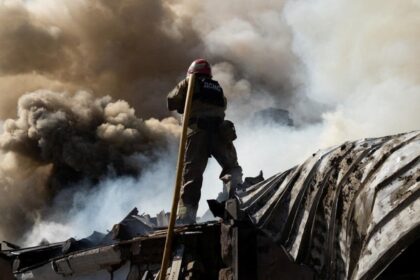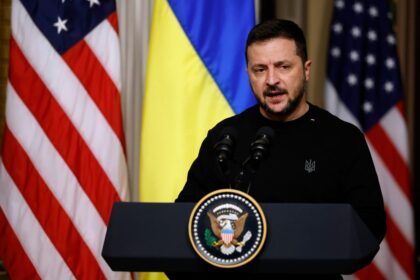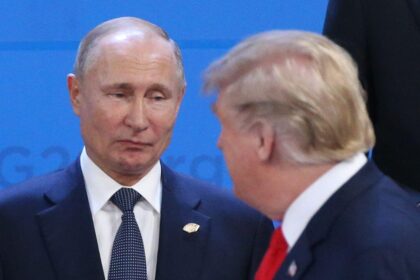**Russian Drone Tactics Evolve, Ukraine’s Air Defenses Struggle to Keep Up**
Over the past few months, a disturbing trend has emerged in Ukraine: Russian Shahed drones have been successfully penetrating Ukrainian air defenses and hitting residential neighborhoods and critical infrastructure. This shift in tactics is causing concern among military analysts and civilians alike.
According to a report by Texty, a Ukrainian media outlet, Russia has changed its approach to drone warfare, using Iranian-designed Shahed explosive drones to devastating effect. These drones are now being launched from mobile launchers disguised as civilian trucks, which can fire up to five drones at once. The Russians typically launch hundreds of these drones simultaneously, making it difficult for Ukrainian air defenses to keep up.
The attack patterns have also become more sophisticated, with drone swarms entering through multiple directions and using cellular network towers to navigate. Russian forces now often include a lead Shahed UAV that the others follow in coordinated flight, making it harder for Ukrainian defense systems to track and intercept them.
**Defense Challenges**
Until recently, Ukrainian mobile defense groups were relatively effective at intercepting incoming Shahed drones. However, Russian forces have shifted tactics, launching their UAVs at significantly higher altitudes – ranging from 1.5 to 2 kilometers – which makes ground-based interception efforts far less effective. Even advanced systems like the German-supplied Gepard anti-aircraft systems and Skynex radar-guided systems have seen reduced effectiveness against the evolving Russian drone tactics.
**Deception Tactics**
Russia has also started deploying wooden decoy drones known as Parody alongside Shahed UAVs. These rudimentary wooden aircraft carry devices that generate false radar signatures, tricking defense systems into mistaking them for large targets like Il-76 transport planes. This tactic confuses radar systems and causes them to misidentify the threat, allowing actual Shahed drones to slip through undetected.
**Helicopter Countermeasures**
One of the most effective means of destroying Shahed drones has emerged as Ukrainian helicopters. These aircraft are equipped with 30-kilogram FLIR observation systems, enabling round-the-clock monitoring of the airspace in any weather conditions. Helicopter crews typically track drones to areas away from buildings before firing, requiring only two or three bursts to bring down a Shahed. However, deploying helicopters near the border or frontline poses a serious risk due to active Russian air defense systems.
**Ongoing Challenges**
Despite the effectiveness of helicopter countermeasures, significant portions of airspace remain exposed, allowing drones to slip through and reach their targets. The air corridors through which Russian Shahed drone swarms advance typically stretch 60 to 70 kilometers wide, making it difficult for Ukrainian forces to fully cover these areas with helicopters.
As Ukraine struggles to keep up with the evolving Russian drone tactics, civilians are left vulnerable to attacks on residential neighborhoods and critical infrastructure. The ongoing challenges highlight the need for more effective defense systems and increased cooperation among international partners to counter this threat.
**Commentary**
This shift in Russian tactics raises concerns about the ability of Ukrainian air defenses to protect civilians from drone attacks. The effectiveness of helicopter countermeasures is a welcome development, but it’s clear that more needs to be done to address the ongoing challenges posed by these evolving tactics.
The use of wooden decoy drones and high-altitude launches suggests a deliberate attempt by Russia to confuse and overwhelm Ukrainian defense systems. This tactic has significant implications for the ability of Ukraine to protect its citizens and critical infrastructure, and it’s essential that international partners step up their support to help counter this threat.
**Deeper Analysis**
The increasing effectiveness of Russian drone tactics is a symptom of a larger problem – the failure of Western powers to adequately address the evolving nature of modern warfare. The use of drones as a weapon of war has changed the calculus, making it easier for belligerents to attack civilian targets with relative impunity.
This shift demands a corresponding change in how we approach defense and counter-attack strategies. The effectiveness of helicopter countermeasures highlights the need for more agile and adaptable air defenses that can keep pace with evolving tactics. Ultimately, this crisis underscores the importance of international cooperation and coordination in addressing the challenges posed by modern warfare.
Read More @ euromaidanpress.com












